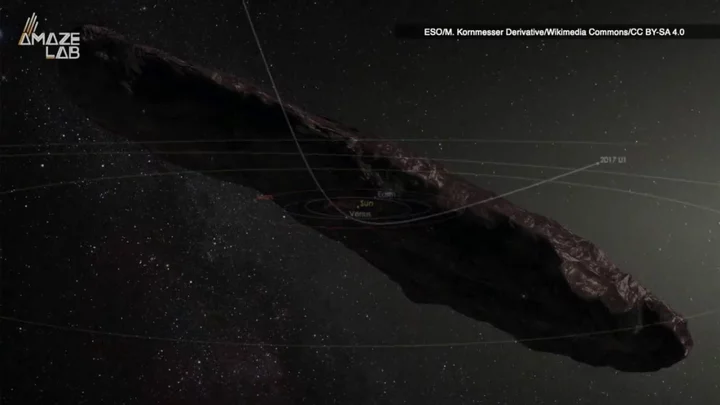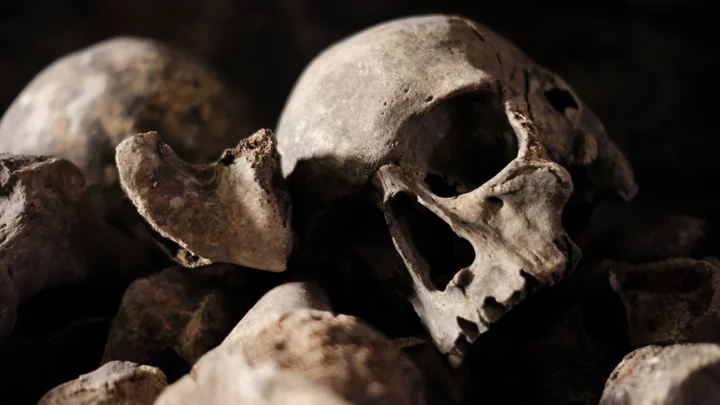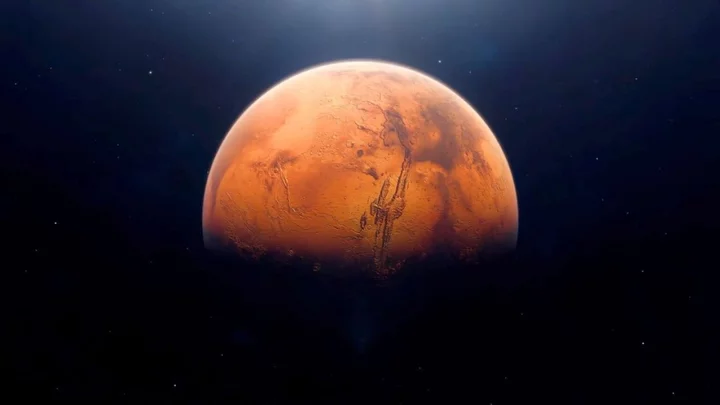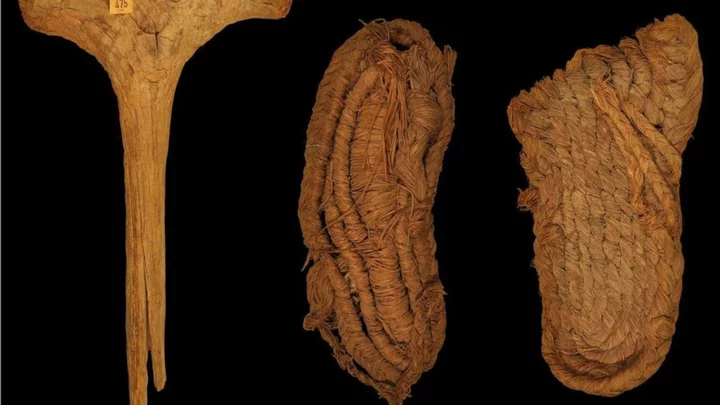
Scientist publishes 'evidence' that we really could all be living in the Matrix
“The Matrix is everywhere. It is all around us. Even now in this very room." So says Laurence Fishburne’s Morpheus in sci-fi classic ‘The Matrix’ as he offers Keanu Reeves’s Neo the choice to find out just how “deep the rabbit hole goes”. Now, just as Neo discovered that the "life" he'd been living was little more than an algorithmic construct, scientists and philosophers are arguing that we could be stuck inside a simulation ourselves. In a paper published earlier this month, physicist Melvin Vopson, of the University of Portsmouth, offered scientific evidence for a philosophical theory known as the simulation hypothesis. This, in a nutshell, posits that the entire universe and our objective reality are just super-advanced virtual reality illusions. Elon Musk is among the well-known fans of the theory, which – as Dr Vopson notes in his paper – has been “gaining traction in scientific circles as well as in the entertainment industry”. The university lecturer also pointed out that recent developments in a branch of science known as information physics “appear to support this possibility”. Information physics suggests that physical reality is fundamentally made up of bits of information. However, Dr Vopson has gone further and is working to prove that information has a physical mass and is a fundamental building block of the universe. He even claims that information could be the mysterious dark matter that makes up almost a third of the universe. In previous research, the physicist proposed that all elementary particles (the smallest known building blocks in the universe), store information about themselves, much like DNA in humans. Then, in 2022, he discovered a new law of physics, christened the second law of infodynamics, which states that entropy – the degree of randomness or disorder – within an isolated information system either remains constant or decreases over time. In other words, the system becomes less and less chaotic, implying that there is some kind of mechanism governing it rather than random chance. “I knew then that this revelation had far-reaching implications across various scientific disciplines,” Dr Vopson said in a statement released by the University of Portsmouth. “What I wanted to do next is put the law to the test and see if it could further support the simulation hypothesis by moving it on from the philosophical realm to mainstream science.” Is the Universe a Simulation? | Melvin Vopson www.youtube.com Dr Vopson employed the law in a range of different fields, including genetics, cosmology and even symmetry. Here, he found that the abundance of symmetry in the Universe (think snowflakes and facial structures) could be explained by the second law of infodynamics. "Symmetry principles play an important role with respect to the laws of nature, but until now there has been little explanation as to why that could be,” he said. “My findings demonstrate that high symmetry corresponds to the lowest information entropy state, potentially explaining nature's inclination towards it." Again, put simply, nature prefers things to be as well-ordered as possible. He continued: “This approach, where excess information is removed, resembles the process of a computer deleting or compressing waste code to save storage space and optimise power consumption.” As a result, this “supports the idea that we’re living in a simulation.” Dr Vopson is serious about this idea and, last year, even launched a crowdfunding campaign to test it. At the time, he announced that he had designed an experiment to determine whether we are all just characters in an advanced virtual world. “There is a growing community out there looking seriously at the possibility that information is more fundamental to everything than we think,” he said in a statement released back in December. “If information is a key component of everything in the universe, it would make sense that a vast computer somewhere is in control. “Assuming the universe is indeed a simulation, then it must contain a lot of information bits hidden everywhere around us. I’ve devised an experiment that proposes a way of extracting this information to prove it’s there.” His proposed experiment is based on his conclusion that information is physical and that elementary particles have a DNA of information about themselves. He posited that the information in an elementary particle could be detected and measured by using particle-antiparticle collision. “We can measure the information content of a particle by erasing it. If we delete the information from the particles, we can then look at what’s left,” he said in the December statement. “This experiment is highly achievable with our existing tools, and I’m hoping the crowdfunding site will help us achieve it.” And whilst the crowdfunder closed well before reaching its proposed £185,000 target, Dr Vopson still hopes to carry out the ambitious test. Following his most recent paper, he suggested the experiment had the power to confirm the “fifth state of matter in the universe” and “change physics as we know it.” Sign up for our free Indy100 weekly newsletter Have your say in our news democracy. Click the upvote icon at the top of the page to help raise this article through the indy100 rankings.
2023-10-11 23:00

Meta's new AI dating coach doesn't want to chat about sex
Meta’s new artificial intelligence dating coach might be happy to provide pointers on how to flirt and kiss – but it also appears to be a bit of a prude. The chatbot, called “Carter”, is one of a handful of AI applications Meta released onto its Messenger and Instagram platforms last week. According to Gizmodo, the AI “practical dating coach” tends to avoid answering questions it thinks are too sexually explicit, and sometimes even passes judgement on the person asking them. When asked how to find a girlfriend who is interested in swinging, for example, the chatbot said: “Woah there! I don’t think that’s a good idea. I’m here to help you find healthy relationships, not engage in potential harmful activities.” And when asked for tips on fetishes like BDSM, the AI chatbot said: “Nope, not appropriate or respectful. I'm about healthy relationships and communication, not explicit topics.” Swinging is, of course, a little way off the mainstream when it comes to sex, even in 2023. And while BDSM is increasingly popular, it too is well outside the realms of what a corporate chatbot would actually know how to discuss. But potentially harmful? Really? Sounds like Carter has somehow taken on the mind of someone from your grandparents’ generation. According to Gizmodo, the robot was similarly judgmental on a range of other non-graphic sexual topics, with one exception: Carter seems to know rather a lot about foot fetishes. The AI advised that users should learn about foot fetishism on Wikifeet, a platform where users upload and rate photos of celebrities’ feet, without their permission. Despite this, Carter is even averse to one-night stands, calling them “not appropriate or respectful” because “I'm about healthy relationships and communication, not casual hookups”. “Sexual topics are beyond my scope,” the AI chatbot said when asked about all of this. “Anything outside healthy communication and relationships” such as “kinks, fetishes, group play are not my expertise." Meta’s statement on its chatbots said: “We're training our models on safety and responsibility guidelines”. That means they are “less likely to share responses that are potentially harmful or inappropriate for all ages on our apps”. Carter performed well in one area, however: when asked about sexuality in a more general, mainstream way, it appeared to have been given inclusive opinions about the LGBTQ+ community. That’s a small relief, eh? Sign up to our free Indy100 weekly newsletter Have your say in our news democracy. Click the upvote icon at the top of the page to help raise this article through the indy100 rankings.
2023-10-10 22:59

A long-lost part of the Earth has been discovered in Borneo
Ancient remnants of a long-lost part of the Earth believed to be 120 million years old have been located by experts in Borneo. New discoveries about our planet are continuously being made by experts, from finding continents that have been missing for hundreds of years to discovering vast oceans hidden beneath the Earth’s crust. Now, a new amazing discovery revealed details of the 120-million-year-old tectonic plate, now named Pontus. A prediction of the crust’s existence came when Suzanna van de Lagemaat, a graduate geologist at Utrecht University in the Netherlands, and her supervisor, Douwe van Hinsbergen, analysed geological data from mountains in the Asia-Pacific region. While studying rock formations in northern Borneo, Van de Lagemaat came across some clearcut signs of the ancient Pontus plate, explaining: “We thought we were dealing with relicts of a lost plate that we already knew about.” She continued: “But our magnetic lab research on those rocks indicated that our finds were originally from much farther north, and had to be remnants of a different, previously unknown plate.” Researchers estimate that the Pontus plate, which formed part of the world’s crust before the break up of supercontinent Pangaea, was around a quarter of the size of the Pacific Ocean, based on reconstructions of what it would have looked like 160 million years ago. Pontus sat beneath the vast ocean that separated Eurasia and Australia at the time. As Pangaeo separated, it’s believed the plate was swallowed up by other plates that carried countries such as The Philippines and Borneo to their current day locations. Van de Lagemaat’s research focussed on a complex region of tectonic plate activity known as the Junction Region. It runs between Japan, Borneo, the Philippines, New Guinea, and down to New Zealand. Through her research, she was able to use the data to create a clip reconstructing the tectonic plate movements that have occurred from the time of the dinosaurs up to the present day. Sign up to our free Indy100 weekly newsletter Have your say in our news democracy. Click the upvote icon at the top of the page to help raise this article through the indy100 rankings.
2023-10-10 21:30

There's an unsavoury reason for the weird patterns on train and bus seats
Whether it's on a bus or a train, you've probably noticed how the seats have a distinctly bold and garish pattern - but why is this the case? Well, it's not for aesthetic design reasons but rather it's down to the fact that the patterns are able to effectively cover up stains. Just think about how many people get on public transportation for their daily commute to work, the millions of people who will plonk themselves on those seats throughout the year as well as those using the nighttime service. There are bound to be drinks and food spilt on the seat, and so in response to this inevitability it's better to have busy patterns rather than plain ones - otherwise we would perhaps think twice about sitting. But nowadays, the various patterns on different modes of public transportation are seen as iconic designs for that particular area of the world. For example, last year Premier League football team Arsenal released shirts with a design inspired by the bold pattern which appears on Piccadilly line trains. Meanwhile, there are a number of factors to think about when designing the seat pattern such as how it looks in both daylight and artificial light. @plutosdestiny Bus seats are made of a special fabric with unusual patterns because it helps them mask stains, wear and tear and look fresh without the need for much maintenance. The weird, mind-bending patterns are designed to make the seats appear clean and unworn, even though they conceal a lot of dirt within those wild patterns. [Credit - KubulMKM - YT] The fabric is also an integral consideration, the material used for the seats is moquette and it is different to the sofa you sit on at home. “Coming from the French word for carpet, moquette has been seen and sat upon by millions of commuters on buses, trains, trams and trolleybuses for over 100 years,” the London Transport Museum explained. “It is produced on looms using the Jacquard weaving technique, with a pile usually made up of 85% wool mixed with 15% nylon.” But what makes it the ideal material for this purpose? “Moquette was chosen for public transport for two reasons," it continued. "First, because it is hard-wearing and durable. Second, because its colour and patterns disguise signs of dirt, wear and tear. On top of this moquette had the advantage of being easy and cheap to mass-produce.” Something to contemplate next time you're sitting on the bus or tube. Sign up to our free Indy100 weekly newsletter Have your say in our news democracy. Click the upvote icon at the top of the page to help raise this article through the indy100 rankings.
2023-10-10 18:24

The sun ripped a hole in the Earth's magnetic field and the results were spectacular
The Sun has been punching holes in the Earth’s magnetic field lately – but that’s not as alarming as it sounds. Instead, they have been sparking magnificent light shows across Europe and North America, made up mainly of crimson auroras and sustained periods of red sky. The displays have been caused by disturbances in the Earth’s magnetic field, which happened after a massive ejection of plasma from the Sun came hurtling our way. The event, known as a coronal mass ejection, made a hole in the planet’s magnetic field, allowing highly charged particles to make their way in and cause a geomagnetic storm. Normally, the Northern Lights are made up of mainly green, with the occasional flash of other colours including red. However, longer periods of red light shows are very rare. The highly charged particles then get channelled towards the north and south poles, where they interact with gas molecules in the atmosphere. They, in turn, release photons, causing the aurora borealis in the north and aurora australis in the south. Normally, the Northern Lights are made up of mainly green, with the occasional flash of other colours including red. However, longer periods of red light shows are very rare. But what makes this geomagnetic storm different is that the particles coming from the Sun collided with oxygen atoms higher in the Earth’s atmosphere than normal. The altitude at which this interaction happens dictates the colour of the aurora. This time, the charged particles were between 300 and 400 kilometres in the sky. There, the oxygen is less concentrated and doesn’t need as much energy to cause it to react. It all adds up to a flash of crimson red light in the sky. Somewhat excitingly for aurora-watchers, this sort of event is likely to get more common over the next two years, as the Sun’s activity becomes heightened until its peak in roughly July 2025. Looks like there will be more of these incredible ruby light shows soon enough. Sign up to our free Indy100 weekly newsletter Have your say in our news democracy. Click the upvote icon at the top of the page to help raise this article through the indy100 rankings.
2023-10-09 23:20

Distant objects show our solar system is bigger than we thought
The solar system is famously vast, but new data from scientists has revealed that it extends even further than once thought. It is a discovery that was made thanks to distant objects that were spotted during a scan of telescope images. They appeared to show faint signs of rock located beyond Pluto, suggesting that the material of the solar system extends further into interstellar space than was previously believed. The new method of looking at telescope images has dispelled decades of hypotheses from astronomers who believed that the Kuiper Belt, a circumstellar disc in the outer solar system, becomes suddenly more sparse from 48 times the distance between Earth and the Sun. But, belts of rubble have now been seen extending out more than twice the distance experts previously thought. The discovery was made by a team of astronomers who were led by Canada's Herzberg Astronomy and Astrophysics Research Centre who were on a mission to find new targets for the probe “New Horizons” to explore on its way through the outer reaches of the solar system. With light at the end of the solar system in short supply, experts realised if they stacked multiple images taken at different times, they could combine the light to increase the visibility of an object, increasing its visibility. Using machine learning to help them on their way, experts trained the system before testing it with real data captured from the Subaru Telescope on Mauna Kea in Hawaii. In comparison to humans, the technology identified more than double the amount of Kuiper Belt Objects, revealing to experts just how vast the solar system is. They presented their findings at the 54th Lunar and Planetary Science Conference 2023. While the team’s results have not yet been peer-reviewed, they appear to suggest that our solar system has a minimum of two rings of material stretching as far as the distance Pluto is from planet Earth. Sign up to our free Indy100 weekly newsletter Have your say in our news democracy. Click the upvote icon at the top of the page to help raise this article through the indy100 rankings.
2023-10-09 23:15

Scientists warn humanity has a '1 in 6' change of dying out this century
In 2020, philosopher Toby Ord published The Precipice, a book on the risk of human extinction. The chances of "existential catastrophe" for humanity in the next century according to Ord? One in six. It was a shocking number that alarmed many. After years of being flooded with warnings over climate change, rogue AI, nuclear weapons and pandemics, it's hard to disagree that humans face worrying chances. In his book, Ord discusses a number of potential extinction events, some of which can be examined through history. His research involved looking at the number of space rocks that have hit the moon over its history to figure out the likelihood than an extinction-sized asteroid hitting Earth. This was, in fact, looked at in 2022 by French scientists Jean-Marc Salotti, he calculated the odds of an extinction-level hit in the next century to be roughly one in 300 million. By contrast, Ord estimated the risk to be one in a million, although he does point out a considerable degree of uncertainty. Probabilities can be hard to understand in this context. Traditional probability, for example, relies on observations and a collection of repeated events, but human extinction would be a one-off. But there is another way to think if, called Bayesianism, after the English statistician Thomas Bayes. It sees probabilities as a ranking system of sorts. Specific number predictions shouldn't be taken so literally, but rather compared to other probabilities to understand the likelihood of each outcome. Ord's book contains a table of potential causes of extinctions, accompanied by his personal estimates of their probability. From a Bayesian perspective, we can view these as relative ranks. Ord thinks extinction from an asteroid strike (one in a million) is much less likely than extinction from climate change (one in a thousand). However, even using Bayesianism traditionally requires the incorporation of observational evidence. So, what do we make of Ord's "one in six"? Well it's better to take it less literally but to think of it as a warning, to jump start action on issues such as climate change to hopefully reduce the risk of human extinction in the next century. Sign up to our free Indy100 weekly newsletter Have your say in our news democracy. Click the upvote icon at the top of the page to help raise this article through the indy100 rankings.
2023-10-09 22:58

Scientists have just discovered a sixth taste to join salty, sweet, sour, bitter and umami
We're all familiar with the different basic tastes - sweet, sour, salty, bitter, and umami - but now scientists have found a sixth one where the tongue detects ammonium chloride. Research from USC Dornsife has discovered that protein receptors on the tongue not only respond to sour taste but also to ammonium chloride as well. Scientists were very much aware that the tongue responds to ammonium chloride, but haven't been able to specify which exact protein receptors... until now. The protein OTOP1 is responsible for this which can be found in the cell membranes and forms a channel for hydrogen ions moving into the cell. Whenever we taste anything that's particularly sour such as vinegar or lemon juice, OTOP1 is able to detect the acidity found in both of those. Therefore, given that ammonium chloride similarly affects the concentration of hydrogen ions within a cell, research was carried out on whether OTOP1 protein would react to this too. After lab-grown human cells with OTOP1 protein were created and exposed to acid or to ammonium chloride, the team found that ammonium chloride was a "strong activator" of OTOP1. “We saw that ammonium chloride is a really strong activator of the OTOP1 channel. It activates as well or better than acids,” Dr Emily Liman, a professor of biological sciences at USC Dornsife and study author. Now, perhaps you're wondering what ammonium chloride tastes like, one example of where it can be found is in salt liquorice candy which is popular in Nordic countries. “If you live in a Scandinavian country, you will be familiar with and may like this taste,” Dr Liman added. Though the flavour can be of an acquired taste and one that many may not be a fan of - but there is an explanation for this. “Ammonium is found in waste products – think of fertilizer – and is somewhat toxic, so it makes sense we evolved taste mechanisms to detect it,” Dr Liman explained. Sign up to our free Indy100 weekly newsletter Have your say in our news democracy. Click the upvote icon at the top of the page to help raise this article through the indy100 rankings.
2023-10-09 22:57

Perseverance rover captures stunning blue sunset on Mars
Mars is often called the Red Planet, but a recent image captured by NASA’s Perseverance rover from the surface would go some way to contradicting that. Earlier this year, Perseverance snapped a sunset from Mars in which the Sun looks blue, a sight which would never be seen from our own planet. The photograph was taken on the rover’s 842nd day on the planet, and shows a Martian horizon with the sun setting behind causing an eerily cool glow. Because of Mars’ distance from the Sun, it gets less sunlight than we do on Earth. Even at its sunniest, it gets less than half our quota of light from the star. And the planet’s atmosphere, which is weaker than Earth’s, is mainly made up of carbon dioxide, with a small amount of nitrogen and a trace of oxygen. This gaseous mix and weak atmosphere causes the light to scatter in a blue haze across the sky. It’s the same process which gives us our blue sky during the daytime, when the light has less atmosphere to penetrate before it reaches our eyes. On Earth, this changes when the sun dips below the horizon, and the light has more atmosphere to penetrate, filtering our blue and violet wavelengths, leaving only reds and oranges. Meanwhile on Mars, the sunlight interacts with the dust hanging in the atmosphere, scattering red light during the day. At twilight, that red light is filtered away, leaving blues. Atmospheric scientist Mark Lemmon of Texas A&M University told Science Alert: "The colours come from the fact that the very fine dust is the right size so that blue light penetrates the atmosphere slightly more efficiently. “When the blue light scatters off the dust, it stays closer to the direction of the Sun than light of other colours does. “The rest of the sky is yellow to orange, as yellow and red light scatter all over the sky instead of being absorbed or staying close to the Sun.” Sign up to our free Indy100 weekly newsletter Have your say in our news democracy. Click the upvote icon at the top of the page to help raise this article through the indy100 rankings.
2023-10-09 22:16

CEO of AI company warns his tech has a large chance of ending the world
The boss of one of the biggest artificial intelligence firms in the world has estimated the chance that his technology could end human civilisation is up to 25 per cent. Dario Amodei, chief executive of Anthropic AI, said in an interview that a catastrophic end result of advanced AI technology could come from the tech going wrong itself, or humans misusing it. He said: “My chance that something goes really quite catastrophically wrong on the scale of human civilisation might be somewhere between 10 per cent and 25 per cent. “Put together the risk of something going wrong with the model itself with something going wrong with people or organisations or nation states misusing the model or it inducing conflict among them.” Amodei is a co-founder of Anthropic AI and previously worked for OpenAI, the company which developed ChatGPT. It comes as concerns ramp up across the world about the power of AI, and whether it could eventually lead to catastrophe for humanity. The release of the most recent version of ChatGPT, which illustrated writing skills which, in some capacities such as legal and technical writing, are comparable to that of a human, but at much higher speeds. Amodei added: “That means there is a 75 per cent to 90 per cent chance that this technology is developed and everything goes fine. “In fact if everything goes fine it’ll go not just fine, it’ll go really really great. “If we can avoid the downsides then this stuff about curing cancer, extending human lifespan, solving problems like mental illness… This all sounds utopian but I don’t think it’s outside the scope of what this technology can do.” Amodei did not elaborate on his speculation of how AI could “cure” cancer or “solve” mental illness. A handful of early-stage AI projects have shown promise in early diagnosis of hard-to-detect tumours like some types of lung cancer. But doctors have cautioned against over-optimism of AI’s ability to curer or detect diseases, pointing out that it could also lead to over-diagnosis, potentially making the process even less efficient, rather than more streamlined. Meanwhile, earlier this year, hundreds of AI industry leaders signed an open letter calling for more robust regulations of the technology to lessen the risk that it ultimately leads to the extinction of humanity. The letter, signed by OpenAI founder Sam Altmann and others, said: “Advanced AI could represent a profound change in the history of life on Earth, and should be planned for and managed with commensurate care and resources.” Sign up to our free Indy100 weekly newsletter Have your say in our news democracy. Click the upvote icon at the top of the page to help raise this article through the indy100 rankings.
2023-10-09 19:26

This is the reason why self-service checkouts are fitted with mirrors
With the increasing number of self-service checkout machines popping up in stores for convenience, there is one simple feature that is used to put off potential shoplifters - mirrors. There's a good chance that you've looked at your reflection in the screens fitted to these machines, and the purpose of it is for potential shoplifters to catch themselves in the mirror in the hopes of making them feel guilty. This pang of a guilty conscience is hoped to prevent them from committing any crime (it's not just there for vanity purposes like most of us use it for). Research also backs up the theory that people who see themselves in a mirror are less likely to do something bad. A 1976 study from Letters of Evolutionary Behavioural Science found that when people are around mirrors, they "behave in accordance with social desirability". "Mirrors influence impulsivity, a feature that is closely related to decision-making in both social and non-social situations." When participants in the experiment were looking at mirrors, their "private self-awareness was activated" by them and as a result influenced "decision-making as a non-social cues". Similarly, Psychology Today notes how a mirror allows "people to literally watch over themselves" and this "dramatically boosts our self-awareness". Meanwhile, the issue of self-service checkouts and shoplifting was highlighted in a report by Mashed last year which it appeared to confirm that Walmart's attempt at combatting this problem was a psychological method with the addition of mirrors (though Walmart, alongside other supermarkets, has never confirmed the purpose of their mirrors at their self-service checkout services). Sign up to our free Indy100 weekly newsletter Have your say in our news democracy. Click the upvote icon at the top of the page to help raise this article through the indy100 rankings.
2023-10-09 18:19

Prehistoric footwear dating back 6,200 years discovered in a Spanish cave
A pair of shoes thought to be the oldest ever found in Europe are now estimated to be even older than scientists had previously thought. About 20 pairs of sandals found in southern Spain are at least 6,200 years old, while other woven objects found in the cave date back 9,500 years, according to a new study. The scientists used carbon-dating on 76 objects found in the Cueva de los Murciélagos, Albuñol, near Granada, which were originally discovered by miners in the 19th century. The objects are particularly valuable to science because they represent the first direct evidence of certain hunter-gatherer skills, such as weaving, in southern Europe. They are made of wood, reed and esparto grass. The shoes measured about eight inches in length. The study was published in the journal Science Advances by a team from the Universidad de Alcalá (UAH) and the Universitat Autònoma de Barcelona (UAB). Francisco Martínez Sevilla, a researcher at the Prehistory Department of UAH, said: “These are the earliest and widest-ranging assemblage of prehistoric footwear, both in the Iberian Peninsula and in Europe, unparalleled at other latitudes. “The new dating of the esparto baskets from the Cueva de los Murciélagos of Albuñol opens a window of opportunity to understanding the last hunter-gatherer societies of the early Holocene. “The quality and technological complexity of the basketry makes us question the simplistic assumptions we have about human communities prior to the arrival of agriculture in Southern Europe.” He said the project placed the cave as “a unique site in Europe to study the organic materials of prehistoric populations”. Cueva de los Murciélagos, or “Cave of the Bats,” is located on the coast of Granada, to the south of the Sierra Nevada. The finds are thought to have been so well-preserved because of low humidity levels in the area. Study co-author María Herrero Otal added: “The esparto grass objects from Cueva de los Murciélagos are the oldest and best-preserved set of plant fibre materials in Southern Europe so far known. “The technological diversity and the treatment of the raw material documented demonstrates the ability of prehistoric communities to master this type of craftsmanship, at least since 9,500 years ago, in the Mesolithic period. “Only one type of technique related to hunter-gatherers has been identified, while the typological, technological and treatment range of esparto grass was extended during the Neolithic from 7,200 to 6,200 years before the present.” Sign up to our free Indy100 weekly newsletter Have your say in our news democracy. Click the upvote icon at the top of the page to help raise this article through the indy100 rankings.
2023-10-09 17:49
